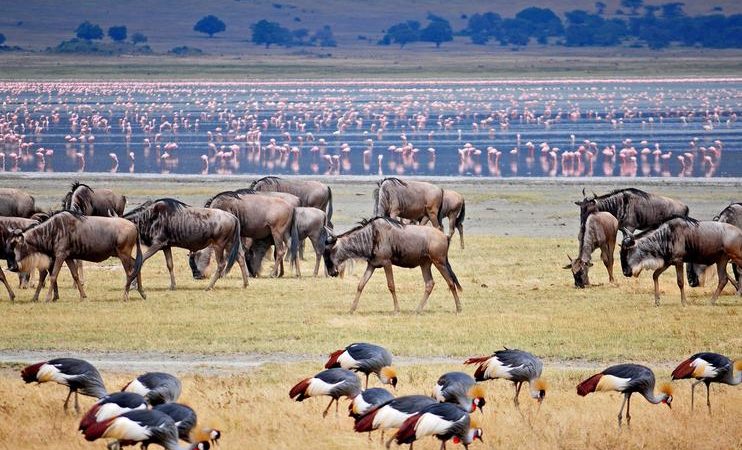Capturing the Thrill: How to Photograph Animals on the Move & Action.
Animals burst with life, and capturing that dynamism in a still image can be incredibly rewarding. Whether it’s a playful puppy leaping, a majestic eagle soaring, or a zebra herd thundering across the plains, freezing the action adds a whole new dimension to your photography. But let’s face it, photographing critters on the go can be challenging. Fear not, budding wildlife photographer! Follow these tips, and you’ll be snapping stunning action shots in no time.
Gear Up for Speed:
- Fast Shutter Speeds: Your camera’s shutter speed controls how long the sensor is exposed to light. For sharp, blur-free images of moving animals, you’ll need fast shutter speeds. Start with 1/250th of a second for moderate movement, and go up to 1/1000th or even 1/2000th for faster subjects like birds in flight. Experiment to find the sweet spot for your situation.
- Telephoto Lens: Get closer to the action without disturbing your subject by using a telephoto lens. These lenses magnify distant objects, allowing you to fill the frame with your moving animal. Ideally, choose one with a large aperture (f/2.8 or lower) for better low-light performance and shallower depth of field.
- Continuous Autofocus: Most modern cameras have continuous autofocus modes designed to track moving subjects. Activate this mode to ensure your camera keeps adjusting focus as the animal moves.
Mastering the Shot:
- Anticipate the Action: Observe your subject and predict its movements. Where will it jump? Run? Fly? Pre-focus on that spot and wait for the decisive moment to fire the shutter.
- Pan with the Subject: As the animal moves, smoothly swivel your camera and lens, keeping it in the frame. This technique helps maintain sharp focus while creating a sense of motion.
- Burst Mode: Don’t rely on just one shot! Use your camera’s burst mode to capture a rapid sequence of images, increasing your chances of catching the perfect moment.
- Compose Creatively: Think beyond just the animal itself. Consider the background, leading lines, and negative space to create a visually compelling composition.
Beyond the Basics:
- Embrace Blur: While sharp images are great, consider using slower shutter speeds (around 1/100th of a second) to intentionally blur the animal’s movement. This can create a dynamic effect, conveying speed and energy.
- Experiment with Angles: Get low, crouch, or climb to capture unique perspectives that add drama and dynamism to your photos.
- Practice Makes Perfect: As with any skill, photography takes practice. Head to your local park, zoo, or backyard and start honing your skills on smaller animals before venturing into the wild.
- Remember: Ethical and responsible photography is crucial. Respect the animals, their habitat, and other photographers. Never disturb or stress wildlife for a photo.
Top 12 Safari Photo Tips
Safari Photography Tips for Catching Animals in Action need investing in a quality telephoto lens with image stabilization is key to capturing animals on the move. Learn about the best equipment for your safari photography expedition and how to make the most of your gear. Embarking on a safari adventure is a dream for many wildlife enthusiasts and photographers. In this guide, we’ll delve into Safari Photography Tips, revealing expert insights and tricks to help you capture the dynamic movements of animals in their natural habitat.
- Get out early
- Camera ready at all times
- Always be looking
- Shoot from downwind
- Try the unconventional
- Move to where the animals are going
- Don’t shoot bullseye
- Clean & simple backgrounds
- Focus on improvement
- Use the cameras silent mode
- Shoot in good light
- Look out for non-animal scenes
How do I choose the best telephoto lens for safari photography?
Selecting the right telephoto lens involves considering factors like focal length, image stabilization, and compatibility with your camera. Look for lenses with a versatile range suitable for capturing distant subjects.What is the significance of burst mode in wildlife photography?
Burst mode allows you to capture a series of rapid shots in quick succession, increasing the likelihood of capturing the perfect moment in dynamic wildlife scenes. It’s an invaluable tool for photographing animals on the move.Why is focusing on the eyes crucial in wildlife photography?
The eyes are a focal point of emotion and connection in wildlife photography. Sharp, focused eyes draw viewers into the image and create a more intimate connection with the subject.How can I adapt to changing lighting conditions in the wild?
Understanding the impact of different lighting conditions on your photographs is key. Learn to adjust your camera settings and techniques to make the most of available light, whether in the harsh midday sun or during the golden hours.What ethical practices should I follow while photographing wildlife?
Respecting the natural behavior and habitats of animals is essential. Keep a safe distance, avoid disturbing the animals, and adhere to ethical guidelines to ensure your photography has minimal impact on the wildlife.How can I build a compelling wildlife photography portfolio?
Curating a captivating portfolio involves selecting diverse and impactful images. How do photographers take close-ups of animals. Organize your portfolio to tell a story, showcase your growth as a photographer, and highlight the unique moments captured during your safari adventures.With these tips and a dose of patience, you’ll be well on your way to capturing the captivating grace and energy of animals in motion. Happy shooting!
Embarking on safari photography is a thrilling journey that requires a combination of technical skill, patience, and a deep appreciation for wildlife. By how to photograph animals on the move mastering the outlined tips, you’ll be well-equipped to capture the breathtaking beauty of animals in action and create a portfolio that reflects your passion for wildlife photography.








